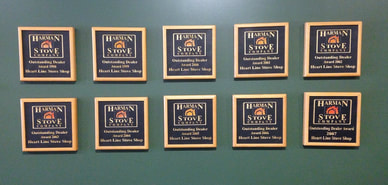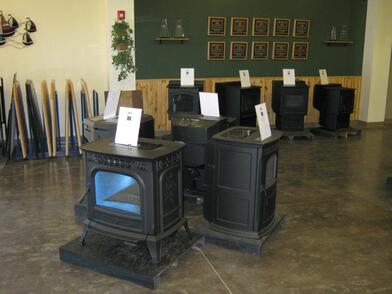Pellet, Gas, and Wood Stove Safety and Efficiency
If you haven’t already, it’s time to crank up your stove to keep your family warm and comfortable. It’s also time to double check a few parts of your heating system for safety and efficiency, whether you’re burning wood, pellets, or gas.
Get a Carbon Monoxide Detector
Carbon Monoxide has been called the silent killer. That’s because it’s a colorless, odorless poison gas that’s produced when natural gas, oil, wood (including pellets), or propane are burned. That gas can come into your home if your chimney or flue is blocked, or if your stove isn’t working correctly. If you’re living in a new home, you probably already have detectors on every level of your house. If not, go out and get a few. They’re an inexpensive way to help alert your family if that gas enters your home.
Check Your Chimney
When you burn wood of any kind, the moisture in that wood can create creosote. According to the EPA (Environmental Protection Agency), creosote build-up can block your chimney or piping, reducing the efficiency of your stove or allowing Carbon Monoxide to enter your home.
If you find that your chimney and piping are not as clean as they should be, find a pro to give them a good cleaning. The Chimney Safety Institute of America at www.csia.org lists certified sweeps in your area.
Maintain Your Stove
Experts say that as little as 1/10th of an inch of soot buildup can reduce your stove’s efficiency by 50 percent. That’s a big deal. Performing daily, weekly, and monthly cleanings during the winter can help.
Here are some ways to improve your stove’s efficiency.
Wood Stoves
Pellet Stoves
Gas Stoves
Warm Your Hands and Heart at Heart Line Stove Shop
The Hearth and Home Department at your Northeast owned and operated Heart Line Stove Shop carries everything you need, including stoves, parts, accessories, as well as pellets by the bag or pallet. Our hearth experts are here to answer your questions and help you find the perfect stove to keep your family warm this winter.
Heart Line Stove Shop Tips
Get a Carbon Monoxide Detector
Carbon Monoxide has been called the silent killer. That’s because it’s a colorless, odorless poison gas that’s produced when natural gas, oil, wood (including pellets), or propane are burned. That gas can come into your home if your chimney or flue is blocked, or if your stove isn’t working correctly. If you’re living in a new home, you probably already have detectors on every level of your house. If not, go out and get a few. They’re an inexpensive way to help alert your family if that gas enters your home.
Check Your Chimney
When you burn wood of any kind, the moisture in that wood can create creosote. According to the EPA (Environmental Protection Agency), creosote build-up can block your chimney or piping, reducing the efficiency of your stove or allowing Carbon Monoxide to enter your home.
If you find that your chimney and piping are not as clean as they should be, find a pro to give them a good cleaning. The Chimney Safety Institute of America at www.csia.org lists certified sweeps in your area.
Maintain Your Stove
Experts say that as little as 1/10th of an inch of soot buildup can reduce your stove’s efficiency by 50 percent. That’s a big deal. Performing daily, weekly, and monthly cleanings during the winter can help.
Here are some ways to improve your stove’s efficiency.
Wood Stoves
- Daily: Check the firebox and walls of the fireplace for soot buildup. Clean if needed.
- Weekly: Check the stovepipe for cracks or corrosion.
- Monthly: Inspect the stove, looking for cracks in the metal or anywhere else.
Pellet Stoves
- Daily: Check the ash pan and empty if needed. Also, look for hard bits of ash that can block airflow, and remove any ash, bits of pellet, or pellet dust from the hopper if necessary.
- Weekly: Clean the heat exchanger. Just move the handle in and out once or twice to knock down any ash that has accumulated.
- Monthly: Clean the glass using a standard glass cleaner and plenty of elbow grease to remove the soot.
Gas Stoves
- Monthly: Inspect the area near the pilot light for spiders. Specialists indicate that tiny white spiders, commonly known as gas spiders, can often be the culprit when a pilot light fails to relight properly.
Warm Your Hands and Heart at Heart Line Stove Shop
The Hearth and Home Department at your Northeast owned and operated Heart Line Stove Shop carries everything you need, including stoves, parts, accessories, as well as pellets by the bag or pallet. Our hearth experts are here to answer your questions and help you find the perfect stove to keep your family warm this winter.
Heart Line Stove Shop Tips
- Efficiently running stoves can decrease harmful particles in your home by up to 70%.
- Wood burning and pellet stoves can suck moisture out of your home. Place a teakettle on top of your stove to add moisture, and some country flair, back into your house.
- Burn dry wood and pellets to help avoid creosote buildup.


